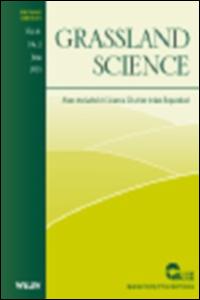Morpho-anatomical traits of root and non-enzymatic antioxidant system of leaf tissue contribute to waterlogging tolerance in Brachiaria grasses
Soil waterlogging is a major abiotic stress that affects the growth and yield of forage grasses in the tropics. Brachiaria forage grasses are widely planted in the tropics to sustain livestock production. An outdoor study was conducted using plastic cylinders under drained and waterlogged soil conditions in order to identify root and shoot traits associated with waterlogging tolerance in Brachiaria ruziziensis (waterlogging sensitive) and Brachiaria humidicola (waterlogging tolerant). For that reason, dry mass, leaf chlorophyll content, photosynthetic efficiency, root morpho‐anatomical traits (aerenchyma, stele proportion, suberin deposition) and total non‐enzymatic antioxidant activity in leaf tissue were determined. Under waterlogging, reductions of shoot biomass, chlorophyll loss, impairment of photosynthetic efficiency and diminution of antioxidant system were found in B. ruziziensis but not in B. humidicola. In B. humidicola an increase of the antioxidant system in response to waterlogging was found. Under waterlogging, both grasses showed an increase in root aerenchyma, reduction of root stele proportion and shorter roots than plants grown under drained conditions. We conclude that a combination of greater aerenchyma formation, smaller stele proportions, increased suberin deposition in the outer part of the root and an escalation of the non‐enzymatic antioxidant system acts to enhance root aeration and prevent the deleterious effect of reactive oxygen species in plants of B. humidicola subjected to waterlogged conditions.

